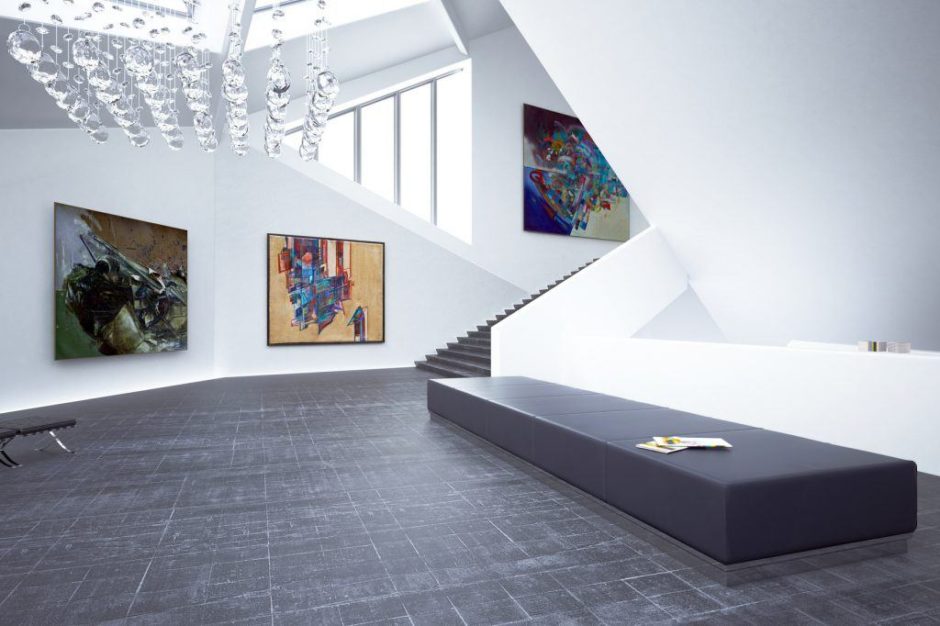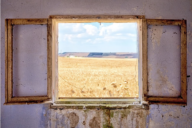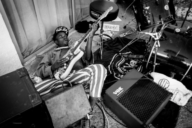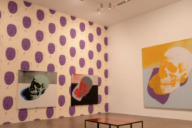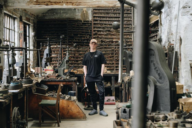ART INVESTMENT TODAY – WHAT WE CAN LEARN FROM OLYVIA KWOK
Banksy once again reached the worlds lips after his stunt last October. Unbeknownst to the bidding crowd, Banksy’s ‘Love is in the bin’ had a remotely operated shredder built into the frame. Upon the fall of the auctioneer’s hammer at £850,000, the Girl with balloon lowered through the bottom of the frame and fell into ribbons. The stunt was supposed to destroy the work completely, yet through a claimed technical failure only partially destroyed the piece, immediately rocketing its value by up to 100%. An even more surprising and hilarious turn was taken by art collectors who thought they could increase their return on their own Banksy investments by giving them the same shredding treatment. One of Ian Syer’s clients plummeted his £400,000 official Girl with Balloon print to nothing after misunderstanding what contributes to the art valuation and shredding it to pieces himself.
It’s probably clear to most of us that this is not a way to get a good return on art investments. But what is?
The art market took a huge hit from the 2008 financial crisis. Following the market crash, Art Price’s Art Market Confidence Index reached a -26.6% decrease at its lowest level and sales at auction went down by over £1 billion in less than a year. It’s been a slow crawl since then, but after 10 years, it appears that the art market is finally resembling something of what it used to be.
Over 2017, the art market grew by 16%, art turnover at auction increased by 5.3% and average sale of art at auction rose by 21%. The US art market, which now has over 34% of the market share, saw a 28% increase in art turnover. Likewise, the UK art sales turnover at auction increase by 13% to reach 22.9% of the market share and sales in France were up by 7%.
This is thanks, at least in part, to several high profile record auctions that occurred over the last year. For instance, 2017 saw Christie’s break the record for the most expensive painting to ever be sold with the sale of Leonardo da Vinci’s Salvatore Mundi for a staggering $450 million (over £342 million). However, it appears that this trend is driven by strong performance throughout the rest of the market too.
As sales pick up, the art investment sector is beginning to gain traction again. After a successful year in 2017, 2018 saw art investment finally overtake wine in the Knight Frank Luxury Investment Index (KFLII) to become the number one luxury investment asset. The 2017 Deloitte Luxembourg & Art Tactic Art & Finance Report even estimates that up to 85% of art purchases are made as investments with the view to sell on for profit.
For those that can afford to, buying art for profit is a more solid and enjoyable investment strategy than stocks and shares. Rather than the speed and instability that rules the financial trading world – art investors can sink back into their chair, taking pride and gaining status from the original displayed on their wall. It’s a personal journey, where an investor can derive years of enjoyment from is aesthetic value before cashing in on its monetary value.
But the art market is fickle and esoteric. The rules of the game that govern the financial investment market do not extend to the art market. So it’s not as simple as buying a pricey piece and resting on your laurels until you fancy selling.
First off – there are no quick turn arounds in your investments. It’s illiquid – a long con that’s governed by patience. Artist Susan Eyre’s says that art investments generate their best returns no sooner than 7 years after their initial purchase, but ideally after 10 years or more. And even then, there are no guarantees. The art market is stochastic and hinges completely on whether the right people are there on the day that you choose to sell.
Second and most importantly, pricing reflects more than just taste. A beautiful piece does not equal a profitable one. Likewise, a bad piece will rarely fetch a good profit unless it’s by a grandmaster. But how do you tell? Picking a piece that will get you a decent return on investment takes a keen and practiced eye. It’s a minefield of forgeries, projections, rarity and diligence, that often, takes a professional approach to really tell.
So what can we learn from one of the best?
“Art can be like super-high-fashion trends. Prices can depend on trends and what is fashionable. One day it could be Impressionists and the next Surrealists, that’s why it’s so important to stay in touch with the market and to keep a short-term focus”. Olyvia Kwok.
Olyvia Kwok made a name for herself in the art investment world when at just 22 years of age she shocked the art market after spotting a mistakenly catalogued Chinese Scroll which bought for just $33,000 and went on to sell for $220,000 at a Hong Kong auction house.
Now founder and managing partner of Willstone Management, Kwok draws on her background in mathematics and keen interest in market projections and art trends to direct her purchasing and advising.
According to Kwok it’s about “Knowing the trends and getting it right. Art retains its value. Unlike other assets, such as stocks, the value will never drop to nothing. A Picasso could go today for £20 million or the same work could go tomorrow for £15 million, but it will always be a Picasso.”
From Kwok’s perspective, returns are not a given but can be maximized by keeping your finger on the pulse on the flux and flow of fashion, and ideally, being ahead of the trend. Achieving this requires a considered approach to anticipate as well as respond. For instance, a great example has cropped its head up over recent years in response to the #MeToo movement. A cultural shift in the medias portrayed of women’s issues has promoted a corresponding shift in the representation of female artist’s in major galleries around the world. A keen eyed art investor may have been able to anticipate an increase in popularity of female artists and made investments accordingly.

